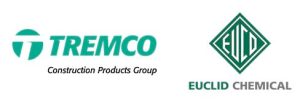
Concrete structures are typically designed for a lifespan between 50 years and more than a century. Over the years, concrete that is exposed to the elements will erode. Weatherproofing concrete extends structure life while minimizing concrete repair costs.
“Concrete is generally more resistant to weather compared to other construction materials,” says Stuart Galloway, President of Canadian Concrete Expo. “However, you still need to take measures to protect it from water.”
This is especially true when the concrete contains reinforced steel. If water penetrates the concrete and reaches the steel, the steel will rust, resulting in a weakening of the structure and decreased life expectancy.
“Concrete is not waterproof; it is filled with interconnected capillary pores that allow the
concrete to “breathe”, but also allow water to pass through,” says Galloway.
In order to protect above-grade concrete structures against the ingress of salts carried by melting snow and ice, consider using a sealant. “The Hydrostop Sealer from Kryton International is a lowVOC (volatile organic compounds) water-based formulation of silanes and siloxanes,” says JeffBowman, B.Sc., Technical Manager at Kryton International. “Hydrostop penetrates and reacts to form a water-repellent barrier. The surface becomes strongly hydrophobic, causing water to form beads on the surface instead of being absorbed.”
This method leads to reduced efflorescence (salt deposits) and greater cleanliness while still allowing the concrete to breathe. Reduced water absorption prevents soluble salts from leaching out and leaving unsightly stains; by preventing water saturation, dirt, and algae are less likely to adhere to the surface, which keeps buildings cleaner; and, since Hydrostop does not form a surface film, water vapor can still escape.
If the concrete is not just being exposed to water, but is actually submerged in water, then you need a different solution. “Concrete infrastructure in marine environments can face reduced lifespans due to rapid deterioration if the risks aren’t considered during the design process,” saysGalloway.
“Wave action and particle impacts can damage the surface through erosion and abrasion, and the ingress of water into the concrete pulls waterborne contaminants into the concrete and affecting the reinforcing steel,” says Bowman. “Of particular concern are chloride ions, which are abundant in ocean water and rapidly accelerate the corrosion of steel reinforcement. Water and chlorides being able to penetrate the concrete leave the reinforcing steel at risk to corrosion and expansive cracking, which leaves the entire structure at risk to premature deterioration.”
To ensure marine concrete structures are waterproof, consider adding a hydrophilic crystalline admixture to the concrete at the time of batching. Kryton’s Krystol Internal Membrane (KIM),for example, creates permanently waterproof concrete; it gives the concrete structure a self-sealing ability. It works by lowering the permeability of the concrete and greatly enhancing the concrete’s ability to self-seal cracks (which is the main reason why water can access the reinforcing steel).
Kryton also creates an Integral Hardening Admixture, called Hard-Cem, that is used to increase abrasion and erosion resistance of concrete. “In marine environments, it can be applied in the construction of seawalls, dams, sluiceways, spillways and drainage conduits, stilling basins, culverts, tunnels, and precast pipes and canals. Hard-Cem is easy to install and can extend the service life of the concrete; it is added at the time of batching and it can be used in vertical or sloped surfaces.
Krystol technology in KIM chemically reacts with water and un-hydrated cement particles to form insoluble needle-shaped crystals. Over weeks and months, these crystals grow, filling the naturally occurring pores and voids in concrete by blocking the pathways for water, thus reducing the permeability which prevents waterborne contaminants from getting in and thereby protecting reinforced concrete structures from the corrosion of reinforcing steel.

